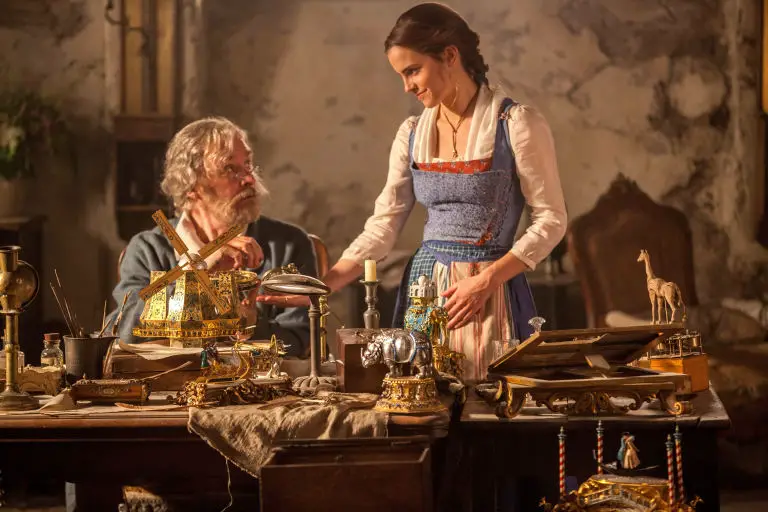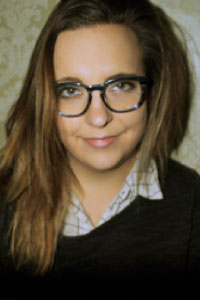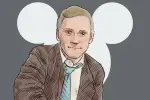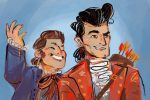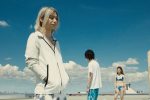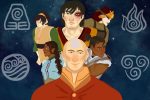Disney lovers simply cannot wait to “Be Our Guest” in the theater for the highly anticipated live action adaptation of “Beauty in the Beast.”
The film, star-studded by names like Emma Watson, Luke Evans and Ewan McGregor to name a few, hits theaters on March 17. Live action Disney films have grown in popularity over the past few years, including “Cinderella,” “The Jungle Book” and “Maleficent,” the last of which was a play off of the old “Sleeping Beauty” story.
“Beauty and the Beast” presents the same obstacle that creating live adaptations of Disney films have faced in the past. The big screen will be littered with human actors as well as animals and several CGI creations. CGI will appear on the screen as the creature form of Luke Evan’s character, the Beast, as well as the talking trinkets inhabited by the unfortunate souls living in the castle at the time of the enchantress’ curse. The tale is, of course, as old as time, and you would be hard pressed to find a millennial today who hasn’t at least heard of the iconic story of Beauty and her Beast.
The story did not originate with Disney though, as older and much darker versions of the tale can be traced back to 1740, written by French novelist Gabrielle-Suzanne Barbot de Villeneuve. The story changed over time and was taken on by several other storytellers until it became an animated classic by Disney in 1991.
As is the case with any remake of a beloved film, critics and general lovers of the story have doubts as to whether or not the live version will do the story justice. The expectations range from hoping the music and lyrics stay true to the original musical score, to trusting that the film will have its own twist to add to the list of adaptations. The musical numbers from the 1991 animated film are timeless and will, according to trailers, find their way into the live action film. However, fans hoping for a bit of a switch up in the new film will not be disappointed. In addition to a few changes for the upcoming film, such as a variation in the enchantress’s curse and the slow loss of human-like qualities in Lumiere, Cogsworth and friends, another outstanding fact recently came to light.
LeFou, the antagonist Gaston‘s comparatively small, silly and boisterous friend, who is played by Josh Gad, will be portrayed as Disney’s first clearly, if not openly, gay character. While there have been allusions to queer-coded Disney characters in the past, such as the drag-queen inspired octopus in “The Little Mermaid” and a decidedly effeminate Uncle Scar in “The Lion King,” Gad’s character LeFou is slated to have a very obvious gay moment in the coming film.
The announcement containing this fact was only recently released, causing various emotions in anticipating moviegoers all over the world. A select few individuals tweeted about and commented on articles containing this information with words of outrage and plans to boycott Disney for their intentions with Gad’s character. Others have reacted on the complete opposite spectrum, praising Disney for their attempt to introduce non-heterosexuals to their long list of beloved characters.
Some have taken a more critical approach to the announcement, referring to the translation of LeFou’s name and the way his character is portrayed in the film. “Le fou” translated from French to English literally means “the fool,” and his fun antics placed him in the role of comedic relief in the 1991 film. He was ridiculed or simply overlooked by the man that he was jealous of and now, it seems, has more complex feelings toward, Gaston. Gaston’s character believes himself to be smitten with Belle, the story’s heroine, when he wasn’t falling victim to his own narcissism.
In the 1991 animated version of “Beauty and the Beast,” LeFou followed in Gaston’s shadow like a puppy, doing everything asked of him, from hiding in a pile of snow outside Belle’s home to leading an advance on enchanted kitchenware while Gaston hunted the Beast.
In light of LeFou’s 1991 portrayal, hesitation toward hearing that Disney’s first openly gay role will be given to his character is understandable. Director Bill Condon has come out with his own regret that the announcement has taken hold this way. Condon doesn’t regret the decision to make LeFou’s character gay, however. He simply wishes that the announcement hadn’t been overblown to the point of such controversy.
Condon spoke in an article promoting the film about his frustration with the reception of the information. Condon would rather have waited for moviegoers to realize LeFou’s struggle with his sexuality during the film itself. He says this is because LeFou himself is still unsure as to what he really wants, and the confusion adds a dimension to the live action “Beauty in the Beast” that did not previously exist.
I, for one, do not find the news of LeFou’s homosexuality to be a surprise. Admittedly, watching the film as a young kid, I didn’t think about what it meant to be gay, let alone how to notice the signs that anyone liked anyone else in a romantic way. When I got older and continued to watch Disney films when others might have stopped, being the devoted fan that I am, I saw the 1991 animated version and vaguely wondered if LeFou had a thing for Gaston.
The guy sings an entire song about him in a bar after maybe having one too many pints. On a more serious note, LeFou proves his loyalty and devotion to Gaston time and time again throughout the film. Separate intentions for LeFou outside of Gaston’s own wishes do not exist in the 1991 film. Therefore, I don’t see the announcement as a stretch to the degree that others do.
Furthermore, if we’re dissecting the innuendos and connotations surrounding the upcoming film, one has to wonder about the storyline of Belle and the Beast. Looking at the tale objectively, a girl ventures into the woods to search for her father, only to find that he is being held captive by a monster. She offers herself in return for her father’s life, and the Beast willingly accepts. Belle then lives out her days in the castle, eventually finding herself taken with the Beast’s subtle kindness and timidity, so much so that she falls in love with him.
Psychological experts would liken this situation to the term “Stockholm Syndrome,” wherein a person held hostage or as a prisoner develops feelings for their captor over time. The purpose of this comparison should not be to cast a pall on the fairytale, but rather to point out the fallacies in making an argument surrounding the acceptance of the gay community on the big screen.
To all the parents out there wondering loudly what they will tell their children when they have questions regarding LeFou’s apparent fondness for men, you will never be able to shield your child from experiencing homosexuality in the world. In fact, broaching the subject with a beloved Disney film as an example seems about as kid-friendly as it gets.
The Disney brand has a multitude of mantras that come to mind. Winnie the Pooh gave wonderful advice to children when he said, “The things that make me different are the things that make me.” The Lion King reminded us to “remember who you are.” The recent live action Cinderella told viewers to “have courage and be kind.” All of these quotes and countless others have in common the beautiful concept of loving yourself and being true to who you are. In that sense, allowing a character to explore their sexuality on the big screen perfectly aligns with Disney’s core values.
For all of the controversy surrounding sexuality in the world today, meeting hesitation with this kind of announcement was most likely expected. The fans planning to boycott attendance of the film in theaters will stay at home and watch the wonderful, albeit slightly dated animated version of the film. I say we let them.
“Beauty and the Beast” makes an impact much due to characters struggling with accepting who they are. Belle is brainy and bookish, and the entire town seems fixated on how odd she is compared to the rest of them. The Beast is as different as different can be, and he faces the obstacle on his journey to win Belle’s heart. The characters living in the castle take form as walking and talking candlesticks, clocks, teapots, feather dusters and armchairs. If anyone knows how it feels to be different, they do.


